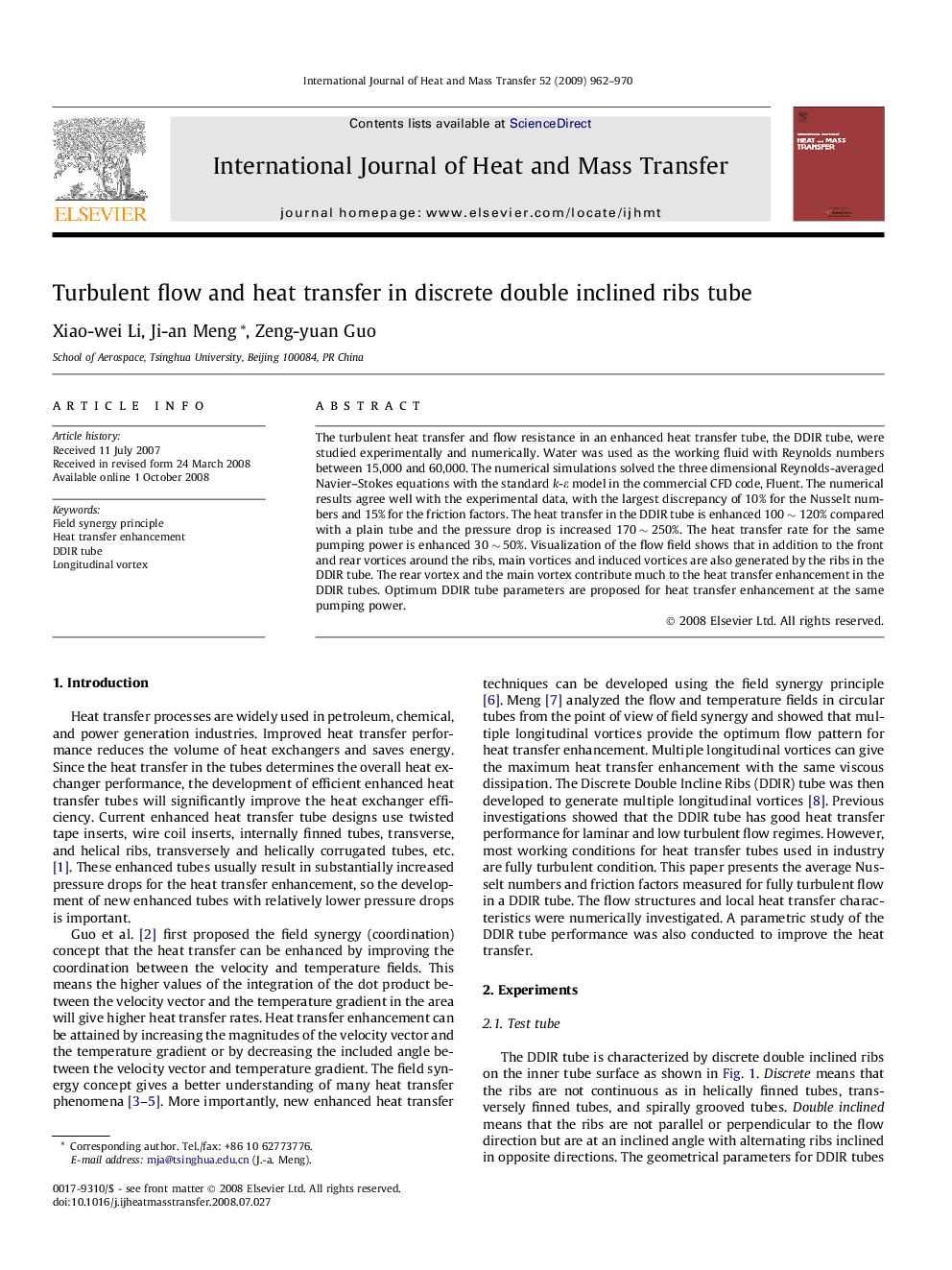| Article ID | Journal | Published Year | Pages | File Type |
|---|---|---|---|---|
| 660634 | International Journal of Heat and Mass Transfer | 2009 | 9 Pages |
Abstract
The turbulent heat transfer and flow resistance in an enhanced heat transfer tube, the DDIR tube, were studied experimentally and numerically. Water was used as the working fluid with Reynolds numbers between 15,000 and 60,000. The numerical simulations solved the three dimensional Reynolds-averaged Navier-Stokes equations with the standard k-ε model in the commercial CFD code, Fluent. The numerical results agree well with the experimental data, with the largest discrepancy of 10% for the Nusselt numbers and 15% for the friction factors. The heat transfer in the DDIR tube is enhanced 100 â¼Â 120% compared with a plain tube and the pressure drop is increased 170 â¼Â 250%. The heat transfer rate for the same pumping power is enhanced 30 â¼Â 50%. Visualization of the flow field shows that in addition to the front and rear vortices around the ribs, main vortices and induced vortices are also generated by the ribs in the DDIR tube. The rear vortex and the main vortex contribute much to the heat transfer enhancement in the DDIR tubes. Optimum DDIR tube parameters are proposed for heat transfer enhancement at the same pumping power.
Related Topics
Physical Sciences and Engineering
Chemical Engineering
Fluid Flow and Transfer Processes
Authors
Xiao-wei Li, Ji-an Meng, Zeng-yuan Guo,
